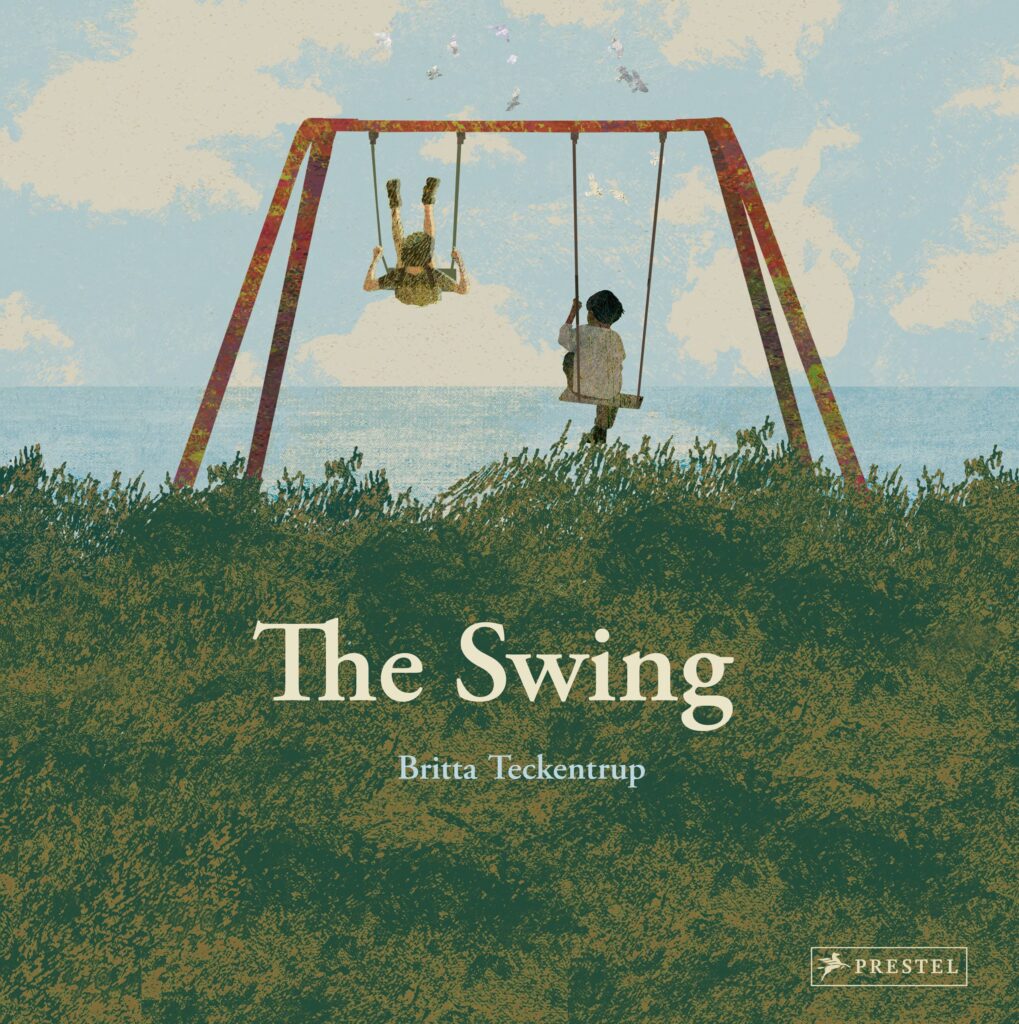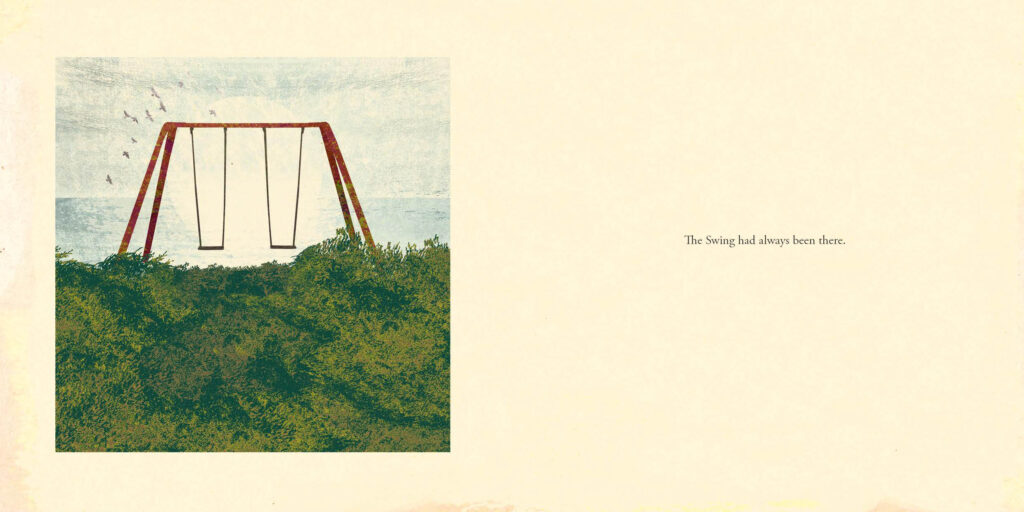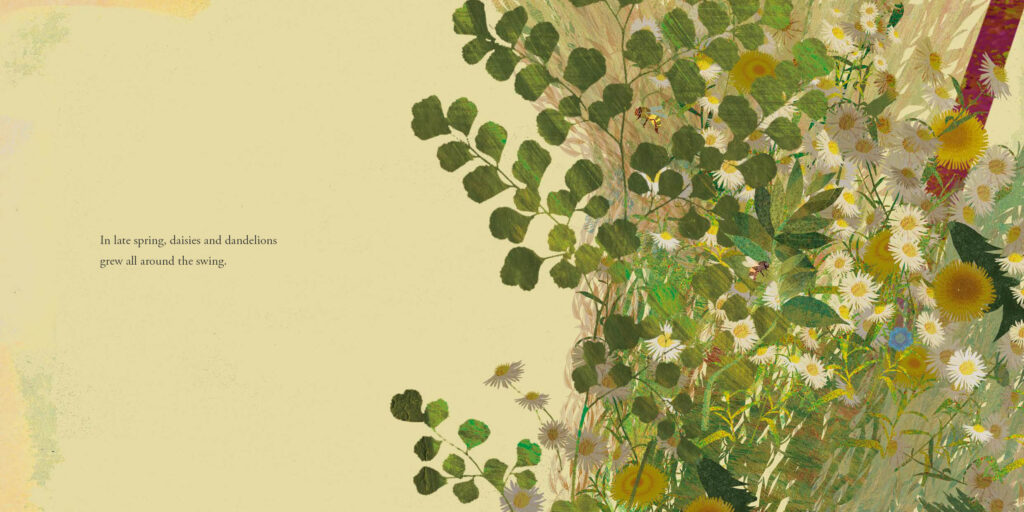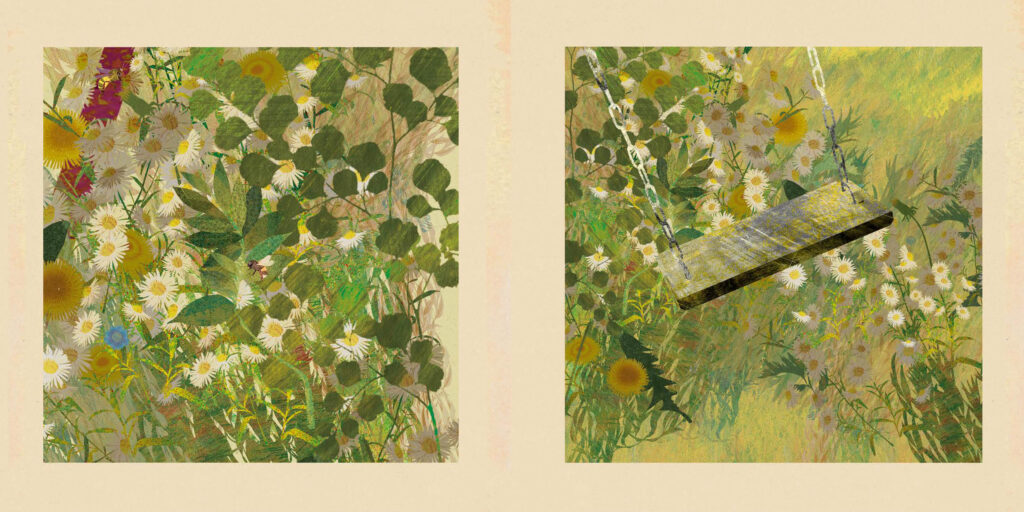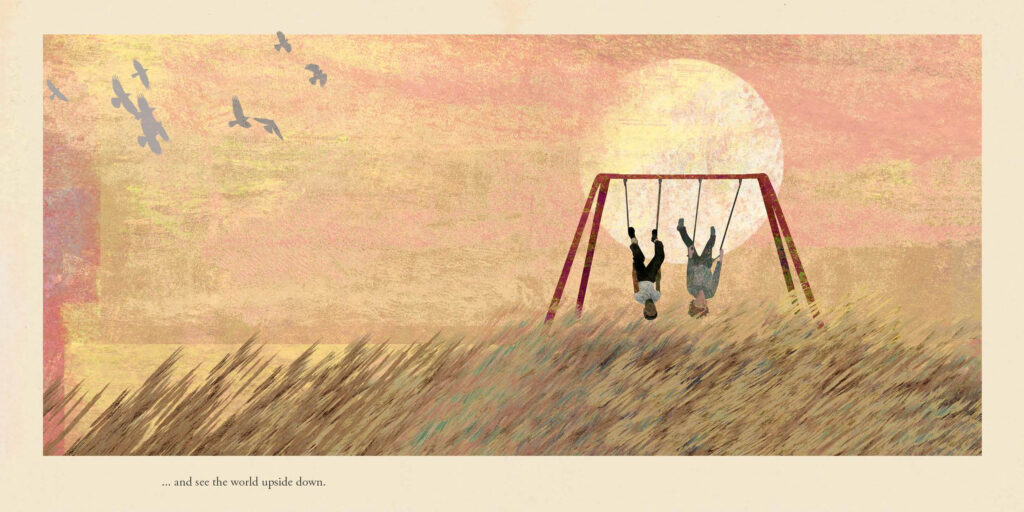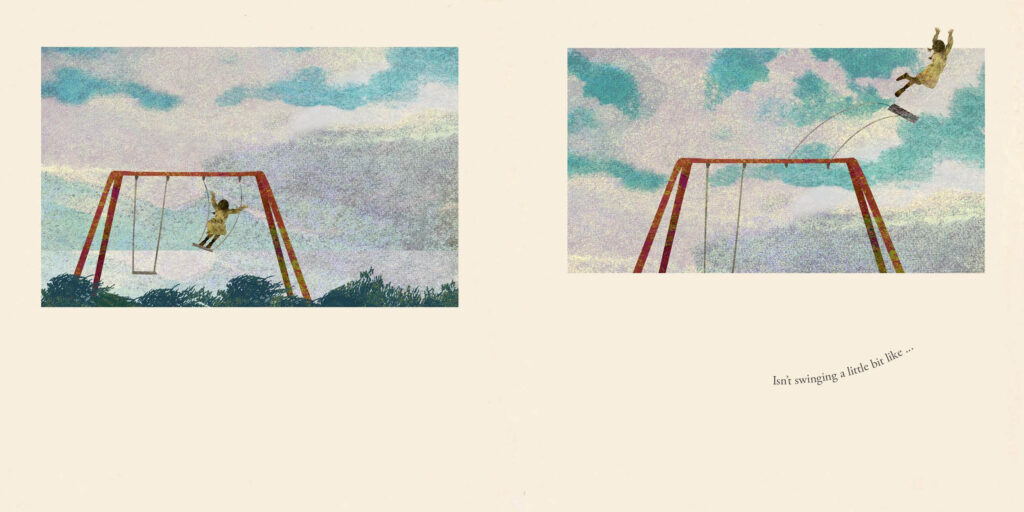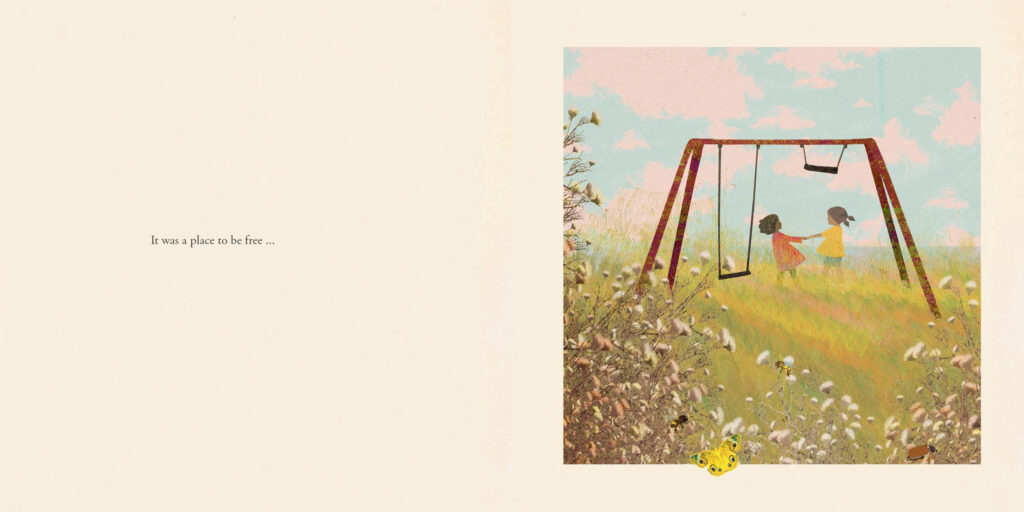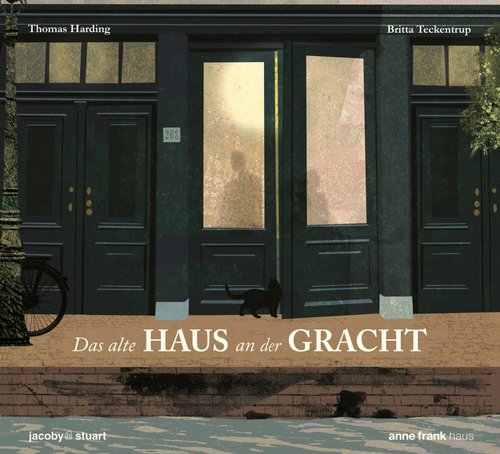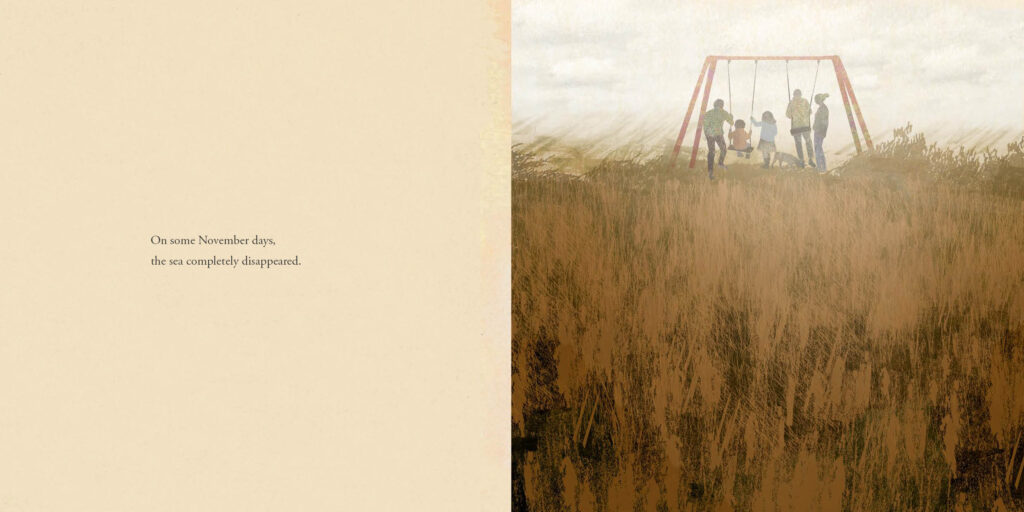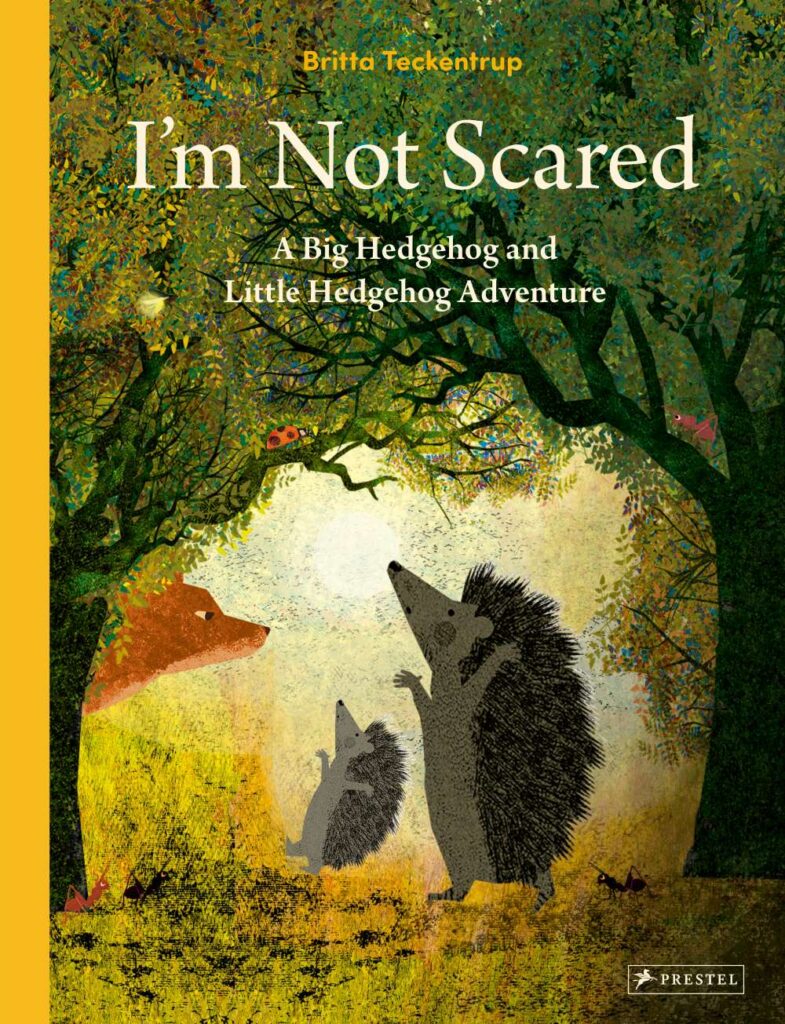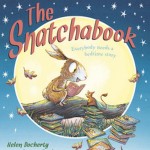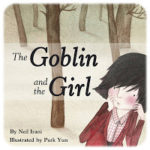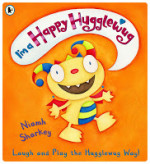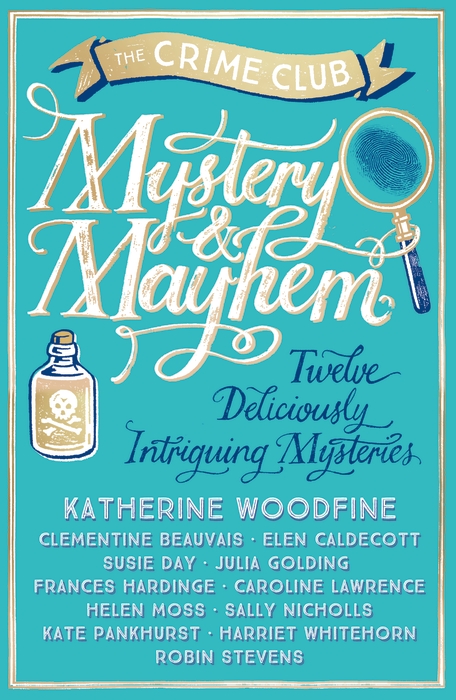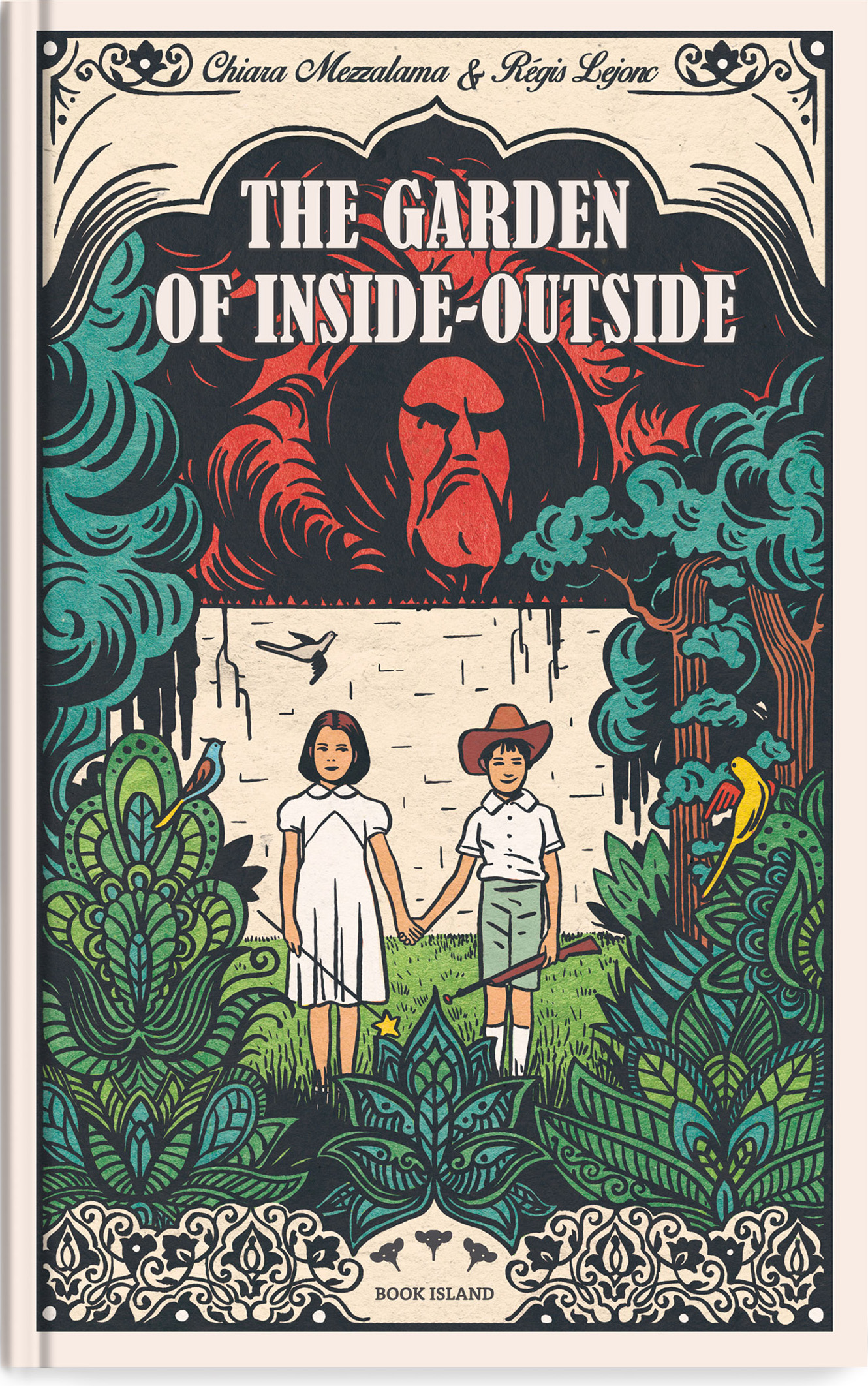The first thing one notices about Britta Teckentrup’s latest book The Swing (Prestel Publishing) is the object itself; it is much longer than traditional formats (160 pages) and a much smaller size too (a square, 22 centimetres, give or take). The size in itself promises a different kind of reading experience, and this continues as the reader opens the book.
The unusual, non-linear, narrative focuses on a swing, situated on a hill overlooking the sea and explores many of our deepest human connections: friendship, love, loss and the creation of memories. The page layouts mirror the lack of linearity, alternating between different formats; this includes full-bleed double spreads, vignettes, and different placements of the text, and sometimes no text at all. This allows this long narrative to remain fluid, while in a way also mimicking the differing speed and movement of the swing itself. Teckentrup’s signature artistic style and palette choices always communicate so much in terms of emotion, and this latest tome is no exception; it radiates from the page.
Throughout the book, the swing remains a constant, passive, silent witness while time, seasons, weather, relationships and emotional connections evolve and revolve around it. “The swing had always been there”, like a transcendent presence preceding us and also outliving us. It is a deeply profound, quietly reflective book and I was curious to find out more about how its theme but also its form had come to life. I was delighted Britta agreed to answer few questions about it.
Hi Britta, Many thanks for taking the time to answer a few questions about The Swing; I wanted to start with asking about how you came to create this book? What was the inspiration for it?
The inspiration came when I looked at old photographs of the swing in my grandmother’s garden – my childhood swing. I also drive past the playground, where I played when I was a child, every time I visit my parents in my old home town. I started to develop an eye for swings and spotted old and new ones in the most unusual places. Some of the places felt haunted – especially the abandoned swings – places full of stories and memories. I started a series of artworks based on swings and the seed for a book, where a swing would take centre stage, was planted: a book about life, memories and the passage of time
There is not an obvious linear storyline in the book, though there are links between some of the characters; how did you decide the order in which each story would appear?
It was a lot of trial and error and the structure of the book went through many different stages. I wanted to keep the stories in the book as fleeting as the characters who visited the swing. I t was quite difficult to find the right flow and I rearranged the pictures and the stories in the book many times and I ended up losing quite a few of the characters and adding new ones to make it all work. I knew that I wanted to start and end the book with almost the same sentence, but in a different tense – past and present. I also knew that I wanted the swing to be abandoned and overgrown at some stage and to be able to give it a new lease of life. Everything else just kind of happened as I went along …
I used the seasons and wordless spreads to help with the flow of the book and to give it some breathing spaces between the different characters. I also made sure that every sad story was followed by an uplifting one. Peter is probably the most important character for the structure of the book as he returns to the swing after many years and brings change.
I love how each double-spread has a different layout; it emulates the movement of the swing in a way – a succession of panels to pick up speed, a full bleed illustration to slow the narrative down and what I particularly love are all the little details spilling out of frames. How do you decide the design for each page, and did the length of the book impact the layout?
The length of the book gave me the freedom to experiment with many different layouts, which was wonderful. The layouts almost reflect the way life can feel – fast, slow, quiet, loud, big, joyous etc. I also like how the square frames can’t contain the details – it is almost as if life spills out of the pages …
You have published books with several publishers, some of which are British and some of which, like Prestel, are German. How do the experiences differ? Do you think there is more freedom, or maybe open-mindedness, in what picturebook makers can create in Germany (and maybe Europe more generally)? I am thinking for example about the format and length of The Swing, but also its themes.
There is such a variety of publishers with different target groups in every country that I find it quite hard to generalise and compare 😉
When I moved to Germany, I picked two very ‘arty’ publishing houses so I can only speak for those two publishers – Prestel and Jacoby & Stuart. (There are plenty of publishing houses in Germany that are not quite so open-minded …). Prestel is a publisher of children’s books as well as art books – which fits my background perfectly. (Jacoby & Stuart publish books for children and adults, graphic novels etc.)
I am usually given the freedom to choose the format, come up with the design & typography and the amount of pages, which to me is the perfect way to create a book. Both publishers support me in creating books that reach adults and children alike.
Is there an illustration or story you favour in the book?
Probably the story of Peter or the sequence where the swing stands in the middle of the sea? My favourite illustration is either the two girl exchanging secrets: “The swing was a place to share secrets”, or “On some November days the sea completely disappeared.”
Finally, can you tell us more about some of your forthcoming projects?
There are quite a few forthcoming projects with various publishers. The next book for Prestel will be another book about emotions – a follow up to When I See Red, which was a book about anger and rage. The new book will be my take on courage and fear.
Thank you so much for taking the time to answer these questions, Britta.
The Swing is published by Prestel Publishing and is available now to buy from all good bookshops or can be purchased via our partner bookshop, Storytellers, Inc.:
Britta’s next title with Prestel, I’m Not Scared, a second adventure in the Big Hedgehog and Little Hedgehog series, comes out on 9th May.
All images © Britta Teckentrup
Source: review copy from publisher

